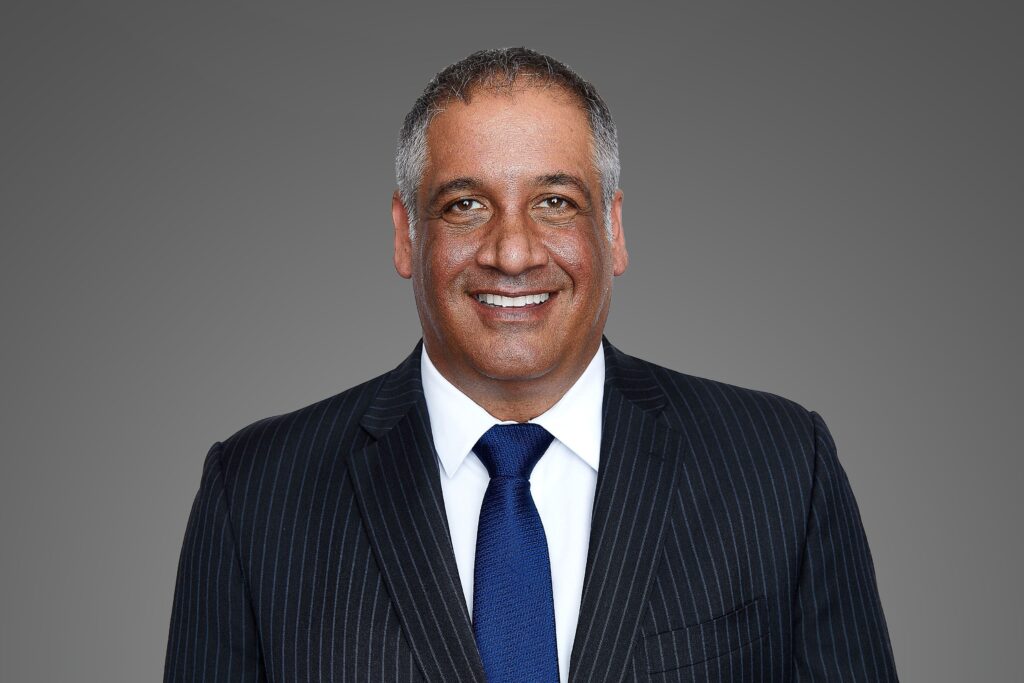Legal Support in Determining At-Fault Parties Self-Driving Car Collisions
Los Angeles, known as the City of Angels, is a bustling metropolis where traditional driving practices collide with state-of-the-art autonomous car technology. The development of self-driving cars has promised a future of enhanced road safety and efficiency. However, with this technical advancement comes a complex and important question – Who’s at fault in a self-driving car accident in Los Angeles, California?
Self-driving cars, also known as autonomous vehicles or driverless cars, are vehicles equipped with advanced sensors, cameras, radar, lidar, and other technologies to navigate and operate without direct human input. The goal of self-driving cars is to provide a safer, more efficient, and convenient mode of transportation.
Key Summary:
- Self-driving cars, equipped with advanced sensors and technologies, aim to enhance road safety, but determining fault becomes intricate with the introduction of algorithms, sensor technologies, and human-machine interactions.
- The Society of Automotive Engineers (SAE) defines six levels of self-driving vehicle automation, ranging from Level 0 (no automation) to Level 5 (full automation).
- The safety of self-driving cars compared to traditional vehicles is a debated topic, with proponents emphasizing reduced human error, consistent decision-making, adaptive safety features, and communication between vehicles.
- In a self-driving car accident, potential at-fault parties include the vehicle manufacturer, software developer, vehicle owner or operator, technology supplier, maintenance provider, road infrastructure authorities, regulatory agencies, and other drivers or pedestrians.
- Determining fault in a self-driving car accident involves considering factors like human intervention, system malfunctions, maintenance and software updates, data analysis, adherence to traffic laws, emergencies, interaction with human-driven vehicles, legal and regulatory context, insurance considerations, and contributory negligence.
- Establishing negligence in a self-driving car accident requires demonstrating a duty of care, breach of duty, causation, and damages.
Self-Driving Cars
The introduction of self-driving cars in California signifies a major breakthrough in automotive technology, marking a crucial step forward in the progress of autonomous vehicles. These vehicles utilize advanced technology to autonomously navigate, make real-time judgments, and handle various driving functions without direct human intervention, including steering, braking, and accelerating.
Levels of Self-Driving Vehicle Automation
The Society of Automotive Engineers (SAE) has defined six levels of automation for self-driving vehicles, ranging from Level 0 (no automation) to Level 5 (full automation). Here’s an overview of each level:
- Level 0 – No Automation: At Level 0, there is no automation, and the human driver is fully responsible for controlling the vehicle. The vehicle may have basic driver assistance features, but they do not constitute automated driving.
- Level 1 – Driver Assistance: Level 1 involves systems that provide single-task driver assistance, such as adaptive cruise control or lane-keeping assistance. While these systems can assist with certain tasks, the human driver remains in control and must monitor the environment.
- Level 2 – Partial Automation: At Level 2, the vehicle can control both steering and acceleration/deceleration simultaneously under certain conditions. However, the human driver must remain engaged, monitor the environment, and be ready to take control at any moment.
- Level 3 – Conditional Automation: Level 3 allows the vehicle to handle certain driving tasks autonomously in specific conditions, such as highway driving. The human driver can disengage from active control but must be ready to intervene when the system requests assistance or encounters a situation it cannot handle.
- Level 4 – High Automation: At Level 4, the vehicle can perform most driving tasks autonomously without human intervention in specific scenarios or environments. However, human intervention may still be required in certain situations or when the vehicle encounters conditions it cannot handle.
- Level 5 – Full Automation: Level 5 represents full automation, where the vehicle can perform all driving tasks under all conditions without any human intervention. In a Level 5 vehicle, there is no need for a steering wheel, pedals, or other controls traditionally operated by a human driver.
Are Self-Driving Cars Safer than Traditional Motor Vehicles?
The safety of self-driving cars compared to traditional motor vehicles is a topic of ongoing debate and research. Proponents of autonomous vehicles argue that once fully developed and deployed at scale, self-driving cars have the potential to be safer than traditional human-driven vehicles. However, some concerns and challenges need to be addressed. Here are key points to consider:
Arguments for the Safety of Self-Driving Cars
- Reduced Human Error: The majority of car accidents are attributed to human error, such as distracted driving, impaired driving, and speeding. Self-driving cars have the potential to eliminate or significantly reduce these factors, leading to safer road conditions.
- Consistent Decision-Making: Autonomous vehicles rely on pre-programmed algorithms and sensors to make decisions. Unlike humans, they don’t get fatigued, distracted, or emotional, which could contribute to more consistent and rational decision-making in various driving situations.
- Adaptive Safety Features: Many self-driving cars are equipped with advanced safety features, such as automatic emergency braking, lane-keeping assistance, and adaptive cruise control. These features can contribute to avoiding or mitigating accidents.
- Communication between Vehicles: Connected autonomous vehicles can communicate with each other and share information about their movements and intentions. This communication has the potential to enhance traffic flow and reduce the likelihood of collisions.
Who is At Fault in a Self-Driving Car Accident?
In a self-driving car accident, several parties may be involved, and their potential liability can vary based on the circumstances. Here are some possible parties that could be considered:
Vehicle Manufacturer
The company that designed, manufactured, or programmed the self-driving technology may be held responsible if a flaw in the system contributes to the accident.
Software Developer
If the accident results from a software glitch or programming error, the company responsible for developing the self-driving software could be implicated.
Vehicle Owner or Operator
The individual who owns or operates the self-driving car may be held liable, especially if they fail to properly maintain the vehicle, misuse the technology, or override safety features without due care.
Technology Supplier
Companies that supply specific components or technologies integrated into the self-driving system may share responsibility if their products contribute to the accident.
Maintenance Provider
Entities responsible for maintaining and updating the self-driving system, including installing necessary software updates, could be held liable if neglect in maintenance is a contributing factor.
Road Infrastructure Authorities
If the accident is caused or exacerbated by poor road conditions, inadequate signage, or other infrastructure issues, the responsible authorities might be implicated.
Regulatory Agencies
Agencies responsible for regulating self-driving technology may face scrutiny if there are lapses in oversight or if the technology is found to be non-compliant with established standards.
Other Drivers or Pedestrians
If other human-operated vehicles or pedestrians are involved in the accident, their actions and potential negligence may also be considered in determining fault.
The specific circumstances of each accident will influence which parties are involved and the degree of responsibility attributed to each. Legal and technical experts often collaborate to thoroughly investigate and determine faults in self-driving car accidents.
Key Factors to Consider When Determining Who to Blame in a Self-Driving Car Accident
Determining fault in a self-driving car accident can be a complex process, and it depends on various factors, including the specific circumstances of the accident, the technology involved, and applicable laws. Here are some considerations that may influence the assignment of fault:
Human Intervention
If the self-driving car allows or requires human intervention and the human driver fails to take appropriate action when necessary, the human driver may be deemed at fault.
System Malfunction
If the accident is caused by a malfunction or failure in the self-driving technology, the responsibility may fall on the technology provider or the manufacturer. This could include issues with sensors, software bugs, or other technical failures.
Maintenance and Software Updates
Maintenance and timely software updates are critical for the proper functioning of self-driving technology. If a failure is linked to inadequate maintenance or failure to install necessary updates, the fault may be assigned accordingly.
Data Analysis
Analyzing data from the vehicle’s sensors and logs can provide insights into the events leading up to the accident. This data may be crucial in determining whether the autonomous system or the human driver was in control and if any system errors occurred.
Adherence to Traffic Laws
If the self-driving car was operating within the bounds of traffic laws and regulations, and the accident was caused by the actions of another human driver or external factors, the fault may be assigned to the party responsible for those actions or conditions.
Emergency Situations
In emergencies where the self-driving car must make split-second decisions, the programming and decision-making algorithms become critical. Fault may be assessed based on whether the autonomous system made reasonable decisions given the circumstances.
Interaction with Human-Driven Vehicles
Determining fault becomes more complex when self-driving cars share the road with traditional human-driven vehicles. Accidents may occur due to differences in driving behavior and unpredictability between autonomous and human drivers.
Legal and Regulatory Context
The legal and regulatory framework for self-driving cars varies by jurisdiction. Assigning fault may be influenced by the specific laws and regulations in place at the location of the accident.
Insurance Considerations
Insurance policies may also play a role in determining fault. Insurance companies may need to adapt their policies to accommodate the unique circumstances of self-driving car accidents.
Contributory Negligence
Some accidents may involve shared responsibility, where the self-driving car and another party contribute to the incident. In such cases, fault may be apportioned based on each party’s degree of negligence.
As self-driving technology continues to evolve, legal frameworks and standards for determining fault in autonomous vehicle accidents will likely be refined. Legal precedents and case law will be crucial in establishing liability norms for self-driving car accidents.
How To Establish Negligence in a Self-Driving Car Accident?
To establish negligence in a self-driving car accident, the injured party typically needs to demonstrate the presence of four key elements of negligence. Here are key steps and considerations to establish negligence in a self-driving car accident:
-
Duty of Care
The first element involves establishing that the party being accused of negligence owed a duty of care to the injured party. In a self-driving car accident, this duty of care may vary depending on whether the party in question is the human driver, the technology provider, or the manufacturer of the autonomous system. The duty of care might involve maintaining and operating the self-driving car in a manner consistent with industry standards, best practices, and legal requirements.
-
Breach of Duty
Once the duty of care is established, the next step is to show that the party breached that duty. This involves demonstrating that the actions or inactions of the party fell short of the standard of care expected under the circumstances. This could include failure to properly maintain the autonomous system, failure to respond appropriately to warnings or prompts from the system, or any deviation from established safety protocols.
-
Causation
Causation establishes a direct link between the breach of duty and the injuries or damages suffered by the injured party. It involves demonstrating that the negligence of the accused party directly led to the occurrence of the accident. This could involve proving that a malfunction in the autonomous system, a failure to respond to a hazard or another form of negligence was the proximate cause of the accident.
-
Damages
The final element is proving that the injured party suffered actual damages as a result of the accident. Damages can include physical injuries, property damage, medical expenses, loss of income, pain and suffering, and other measurable losses. To pursue a legal claim for negligence, there must be evidence of tangible harm or losses incurred by the injured party.
In summary, you must demonstrate that a duty of care existed, that there was a breach of that duty, that the breach directly caused the accident, and that you suffered damages as a result. This legal framework helps provide a structured approach for determining liability and accountability in autonomous vehicle accidents.
Call Our Self Driving Car Accident Lawyer in Los Angeles Today!
While advancements in self-driving technology hold great promise, challenges persist. If you or someone you love was involved in a self-driving car accident in Los Angeles, it’s essential to understand your legal rights and options.
As technology and regulations evolve, legal support like Haffner Law plays an essential role in assisting you and your family to get the justice you deserve. Haffner Law, with its commitment to justice and extensive experience in personal injury and automotive litigation, stands as a valuable resource in ensuring your rights are protected.
Give us a call today for a free case review. We provide legal support in personal injury cases, employment law, class action lawsuits, and more!







